
Монеро (XMR) қалай өндіруге болады
Көптеген крипто әуесқойлары үшін Monero (XMR) жеке деректерді қорғаумен байланысты. Бұл 2014 жылдың сәуірінде құрылған, орталықтандырылмаған және ашық кодты криптовалюта. Бүгінде Monero криптовалюталар арасындағы үшінші ең үлкен әзірлеушілер қауымдастығына ие. XMR өзінің жеке деректерді қорғау мүмкіндіктерімен танымал, мысалы, сақинамен қол қоюлар, нөлдік білім дәлелдері, жасырын мекенжайлар және транзакция мәліметтерін жасыру үшін IP анонимизациясы. Қысқаша айтқанда, Monero жеке деректерді қорғауды күшейтетін көптеген технологияларға ие. Логикалық сұрақ туындайды: XMR-дан қалай пайда табуға болады? Популярлы әдістердің бірі – майнинг. Егер сіз тәжірибелі майнер болсаңыз немесе криптовалюталар әлеміне жаңадан қадам басып отырсаңыз, бұл мақала Monero майнингінің негіздерін түсінуге көмектеседі.
Сіз Монероны өндіре аласыз ба?
Monero (XMR) майнинг жасауға болады, өйткені ол Proof-of-Work (PoW) консенсус механизмін пайдаланып, монета сыйақыларын алуға мүмкіндік береді. Оны түсіндіру үшін, Bitcoin де дәл осылай жұмыс істейді. Алайда, бір аз ғана айырмашылық бар. XMR ASIC-ке төзімді етіп жасалған, яғни оны стандартты тұтынушы деңгейіндегі жабдықтармен, мысалы, дербес компьютерлермен (ПК) немесе тіпті смартфондармен де майнинг жасауға болады.
Бұл қолжетімділік арнайы алгоритм — RandomX қолдануының арқасында қамтамасыз етілген. Бұл алгоритм теңдік тау-кен өндіруді қамтамасыз ету үшін мамандандырылған аппараттық құралдардың үстемдігін болдырмау арқылы орталықсыздандыруға ықпал етеді. Негізінде, әркімнің XMR майнингіне қосылуға және бір-бірімен тең шарттарда бәсекелесуге мүмкіндігі бар. Сонымен қатар, оны орталық процессорлар (CPU) және графикалық өңдеу блоктары (GPU) арқылы да өндіруге болады.
Монероны қалай өндіруге болады?
Майнинг XMR транзакцияларды тексеру және желіні қорғау үшін күрделі криптографиялық басқатырғыштарды шешуді қамтиды. Мұнда тау-кен өндіруді бастау үшін бірнеше қадамдар берілген:
- Монеро әмиянын алыңыз: өндіруді бастамас бұрын, сыйақыларыңызды сақтау үшін сізге әмиян қажет болады. Жұмыс үстеліндегі әмияндарды, мобильді әмияндарды және аппараттық әмияндарды қоса алғанда, әртүрлі опцияларды таңдауға болады. Мысалы, сіз Cryptomus әмиянын ала аласыз. Пайдаланушыға ыңғайлы интерфейс арқылы активтерді оңай жіберуге, қабылдауға және басқаруға болады. Бұған қоса, жетілдірілген қауіпсіздік жүйесі сіздің инвестицияларыңыздың қауіпсіздігін қамтамасыз етеді.
- Жабдықты таңдаңыз: Тау-кенді процессорлар мен графикалық процессорларда жасауға болады. Ағымдағы компьютеріңізді пайдаланасыз ба, жабдықты жаңартасыз ба немесе арнайы тау-кен қондырғысын жасайсыз ба, соны анықтаңыз.
- ** Майнинг бағдарламалық құралын орнату**: Monero майнинг бағдарламалық құралын жүктеп алыңыз және орнатыңыз. Танымал опцияларға XMRig, MinerGate және XMR-Stak кіреді. Бағдарламалық құралды аппараттық құрал сипаттамаларына сәйкес конфигурациялаңыз.
- Тау-кен бассейніне немесе жеке шахтаға қосылыңыз: тау-кен бассейніне немесе жеке шахтаға қосылғыңыз келетінін шешіңіз. Төменде біз нені таңдаған дұрыс және неге екенін айтамыз.
- Тау-кен ісін бастаңыз: тау-кен бағдарламалық жасақтамасын іске қосыңыз және XMR өндіруді бастаңыз. Жүйенің жұмысын бақылаңыз және тиімділікті оңтайландыру үшін қажет болған жағдайда параметрлерді реттеңіз.
- Тау-кен өнеркәсібінің барысы мен табысын үнемі тексеріп отырыңыз. XMR жеткілікті мөлшерін жинағаннан кейін оны әмияныңызға аударыңыз.
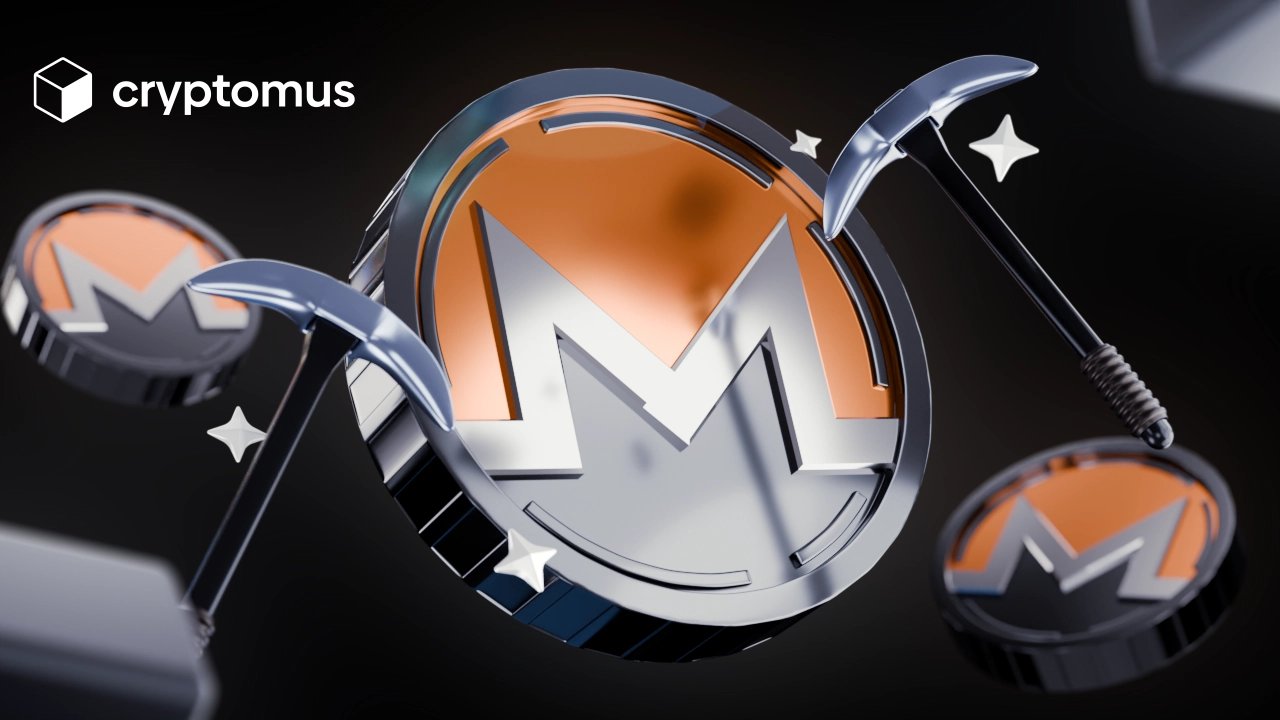
Компьютерде Монероны өндіру
Компьютерде XMR тау-кен жұмыстарын жүргізу қажет аппараттық және бағдарламалық қамтамасыз етудің қолжетімділігіне байланысты ең көп таралған әдістердің бірі болып табылады. Мұны қалай істеу керек:
- Аппараттық құралдарға қойылатын талаптарды тексеріңіз: ДК тау-кен өндіруге арналған ең төменгі талаптарға сай келетініне көз жеткізіңіз. Көп ядролы процессор және лайықты VRAM көлемі бар GPU ұсынылады.
- Monero әмиянын алыңыз. Өндірілген XMR сақтау үшін әмиянды реттеңіз. Әмияныңызды қорғау үшін нұсқауларды орындаңыз.
- Mining бағдарламалық құралын орнату: операциялық жүйеңізбен (Windows, macOS немесе Linux) үйлесімді сенімді Monero майнинг бағдарламалық құралын таңдаңыз. XMRig - тиімділігі мен конфигурациялануы үшін танымал таңдау.
- Тау-кен пулына қосылыңыз: Сіз жеке шахта жасай алатын болсаңыз да, майнинг пулына қосылу тұрақты сыйақы алу мүмкіндігіңізді арттырады. Майнинг пулына тіркеліп, бассейнге қосылу үшін бағдарламалық құралды конфигурациялаңыз.
- Параметрлерді оңтайландыру: Оңтайлы өнімділік үшін тау-кен бағдарламалық құралының параметрлерін конфигурациялаңыз. Бұған CPU ағындарының санын, GPU параметрлерін және басқа сәйкес параметрлерді орнату кіреді.
- Миннингті бастау: тау-кен өндіру процесін бастаңыз және компьютеріңіздің жұмысын бақылаңыз. Қызып кетуді болдырмау және жүйеңіздің біркелкі жұмыс істеуін қамтамасыз ету үшін температураны қадағалаңыз.
XMR процессорларын да, графикалық процессорларды да пайдаланып өндіруге болатыны белгілі. Мұнда GPU арқылы қалай өндіруге болатыны туралы қысқаша нұсқаулық берілген:
- GPU таңдаңыз. Барлық графикалық процессорлар Монероны өндіруге жарамайды. AMD Radeon RX 6000 сериясы және NVIDIA GeForce RTX 3000 сериясы ұсынылады;
- Әмиянды орнатыңыз және тау-кен бағдарламасын жүктеңіз;
- Майнинг бассейніне қосылыңыз;
- Бағдарламалық құралды орнату үшін әмиян мекенжайын және тау-кен пулының деректерін енгізіңіз;
- Кен өндіруді бастаңыз. Табыстылықты бақылаңыз және қажет болса параметрлерді реттеңіз.
Телефонда Монеро өндіру
Смартфондарда XMR өндіру мүмкін, бірақ ол әдетте бірнеше себептерге байланысты ұсынылмайды, соның ішінде шектеулі өңдеу қуаты, қызып кету ықтималдығы, батареяның шамадан тыс төгілуі және аппараттық құралдың ықтимал зақымдалуы. Дегенмен, егер сіз оны сынап көргіңіз келсе, оны қалай жасауға болады:
- Мобильді тау-кен қолданбасын жүктеп алыңыз. MinerGate немесе Mobile Miner сияқты Monero майнингін қолдайтын мобильді қолданбаны табыңыз. Қолданбаны смартфонға орнатыңыз;
- Тіркелгі жасау. Қолданба ішінде тіркелгіге тіркелу;
- Сыйақылар алу үшін Monero әмияныңызды реттеңіз. Крипто әмияныңыздың қауіпсіз екеніне және негізгі фразаның сақтық көшірмесі жасалғанына көз жеткізіңіз;
- Майнинг пулына қосылыңыз. Хэшрейттің төмен болуына байланысты телефонда жеке тау-кен өндіру практикалық емес. Өз ресурстарыңызды басқа кеншілердің ресурстарымен біріктіріп, сыйақы алу мүмкіндігін арттырған дұрыс;
- Параметрлерді конфигурациялау: тау-кен қолданбасын ашып, әмияныңыздың мекенжайын және басқа қажетті ақпаратты енгізіңіз. Қажет болса, қосылғыңыз келетін пулды таңдап, кен өндіруді бастау үшін қолданбаны конфигурациялаңыз. Құрылғыңыздың процессоры мен батареясының кернеуінен сақ болыңыз;
- Миннингті бастау. Зақымдану үшін телефонның өнімділігін және температурасын бақылаңыз.
Solo Mining vs Mining Pools
XMR өндіру кезінде сізде жеке тау-кен өндіру немесе тау-кен бассейніне қосылу мүмкіндігі бар. Әрбір әдістің артықшылықтары мен кемшіліктері бар:
-
Solo Mining: жеке тау-кен өндіру дегеніміз сіз барлық сыйақыларды өзіңізге қалдырасыз. Бұл бассейндегі тау-кен өндірумен салыстырғанда желінің қауіпсіздігін арттырады. Дегенмен, сізде айтарлықтай есептеу қуаты болмаса, блокты сәтті өндіру мүмкіндігі айтарлықтай төмен. Хэшрейтіңізге байланысты блокты табу үшін бірнеше ай қажет болуы мүмкін. Бұл «лотереяны» ұтып алу сияқты болуы мүмкін.
-
Тау-кен бассейндері: тау-кен бассейніне қосылу сіздің есептеу қуатыңызды басқа кеншілермен біріктіруді білдіреді. Бұл тау-кен блоктарының мүмкіндігін арттырады және сыйақыларды пулдың барлық мүшелері арасында бөліссе де, тұрақты түрде сыйақы алу мүмкіндігін арттырады. Екінші жағынан, бассейнде тау-кен өндіру бағдарламалық жасақтама әзірлеушісінің ақысының аз ғана бөлігін алуы мүмкін сыртқы бағдарламалық жасақтамамен ғана мүмкін болады.
Сонымен, жеке тау-кен өндіру хэшраттары жоғары, сыйақылардың өзгермелілігін қабылдауға дайын және тау-кен өндіру технологиясын жақсы түсінетін кеншілер үшін қолайлы.
Тау-кен пулдары тұрақты және дәйекті кірісті іздейтін, техникалық күрделілігі төмен және басқа кеншілермен сыйақы бөлісуге ыңғайлы адамдар үшін өте қолайлы. Көптеген адамдар үшін, әсіресе тау-кен ісін жаңадан бастағандар немесе қуаттылығы аз аппараттық құралдармен, тау-кен бассейніне қосылу, әдетте, практикалық және пайдалы тәсіл болып табылады.
Monero Cloud Mining дегеніміз не?
Майнингте сондай-ақ бұлттық майнинг түсінігі бар, ол XMR үшін де қол жетімді. Monero бұлттық майнингі сіздің жеке жабдығыңызды пайдаланбай, бұлттық майнинг провайдерінен есептеу қуатын жалға алуды қамтиды. Бұл қалай жұмыс істейді:
- Бұлтты өндіру провайдерін таңдаңыз: Monero (XMR) қолдайтын беделді бұлтты өндіру қызметін таңдаңыз. Танымал провайдерлерге Genesis Mining және MinerGate кіреді.
- Тау-кен өндіру келісім-шартын сатып алу: Сіз жалға алған есептеу қуатының көлемін және келісімшарттың ұзақтығын көрсететін тау-кен өндіру келісімшартын сатып алыңыз.
- Сыйақылар алуды бастаңыз: Келісім-шарт белсенді болғаннан кейін, бұлттық майнинг провайдері сіздің атыңыздан тиындарды өндіреді және сіз келісім шарттарына сәйкес сыйақылардың бір бөлігін аласыз.
Монероны өндіру тиімді ме?
Кен өндірудің табыстылығы бірнеше факторларға байланысты:
- Аппараттық құралдардың шығындары: тау-кен жабдықтарына бастапқы инвестиция айтарлықтай болуы мүмкін. Жабдықтың тиімді және үнемді екеніне көз жеткізіңіз.
- Электр энергиясының шығындары: Тау-кен өндірісі көп электр энергиясын тұтынады. Жергілікті электр қуатының тарифтерін тексеріңіз және тау-кен қондырғысын іске қосу құнын есептеңіз.
- Тау-кен жұмыстарының қиындығы: Желі өзінің тау-кен қиындығын желінің жалпы есептеу қуаты негізінде реттейді. Жоғары қиындық сыйақы алу мүмкіндігінің төмендеуін білдіреді.
- Баға: XMR мәні өзгереді. Жоғары бағалар тау-кен өндірісін тиімдірек етеді, ал төмен бағалар кірістілікті төмендетуі мүмкін.
- Бассейн ақысы және техникалық қызмет көрсету: Егер сіз тау-кен бассейнін немесе бұлтты тау-кен қызметін пайдалансаңыз, алымдар мен техникалық қызмет көрсету шығындарын ескеріңіз.
Бір күнде қанша монеро өндіре аламын?
2025 жылдың 24 сәуірі бойынша, егер Monero (XMR) майнинг жүйесі 54.00 килохеш/сек (KH/s) хэш жылдамдығымен жұмыс істесе, күніне шамамен 0.000000000175 XMR майнинг жасауға болады. Қазіргі XMR бағасымен $225.49 USD монетасы үшін бұл шамамен $0.000039 USD құрайды.
1 Монероны өндіру қанша уақытты алады?
2025 жылдың сәуірі жағдайында 54.00 KH/s хэш жылдамдығы мен желінің күрделілігі шамамен 498.17 миллиард болса, 1 Monero майнинг жасауға шамамен 1063 күн кетеді (қазіргі желі жағдайында). Бұл есептеу тұрақты майнинг жасалатынын және үзіліссіз жұмыс істейтінін ескере отырып жасалған. Майнинг пулына қосылу тұрақты әрі жиі төлемдер алуға көмектеседі.
XMR өндіру пайдалы болуы мүмкін болса да, ол шығындарды мұқият қарастыруды және кірісті арттыру үшін стратегиялық тәсілді қажет етеді. Майнингтік ландшафтты дұрыс орнату және түсіну арқылы сіз Monero желісіне сәтті қатысып, күш-жігеріңіз үшін сыйақы ала аласыз.
Бұл мақала сізге XMR-ны тиімді өндіру жолында көмектеседі деп үміттенеміз!
Мақаланы бағалаңыз
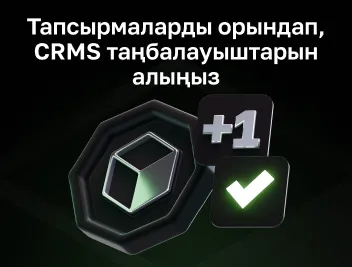
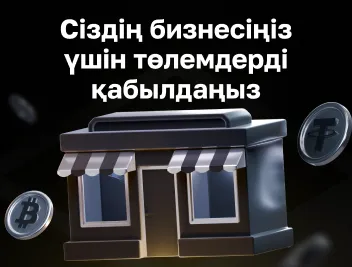
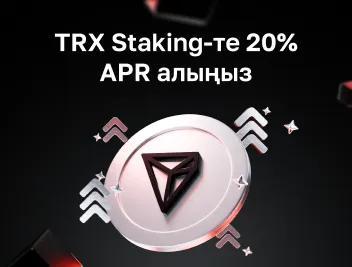
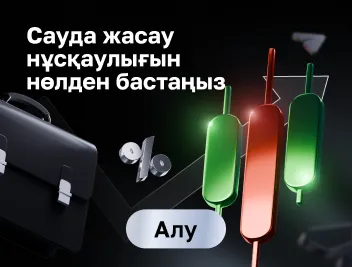
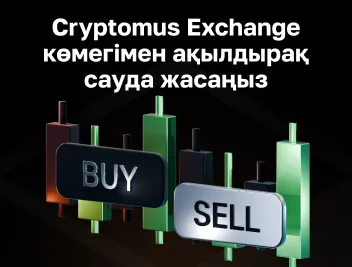


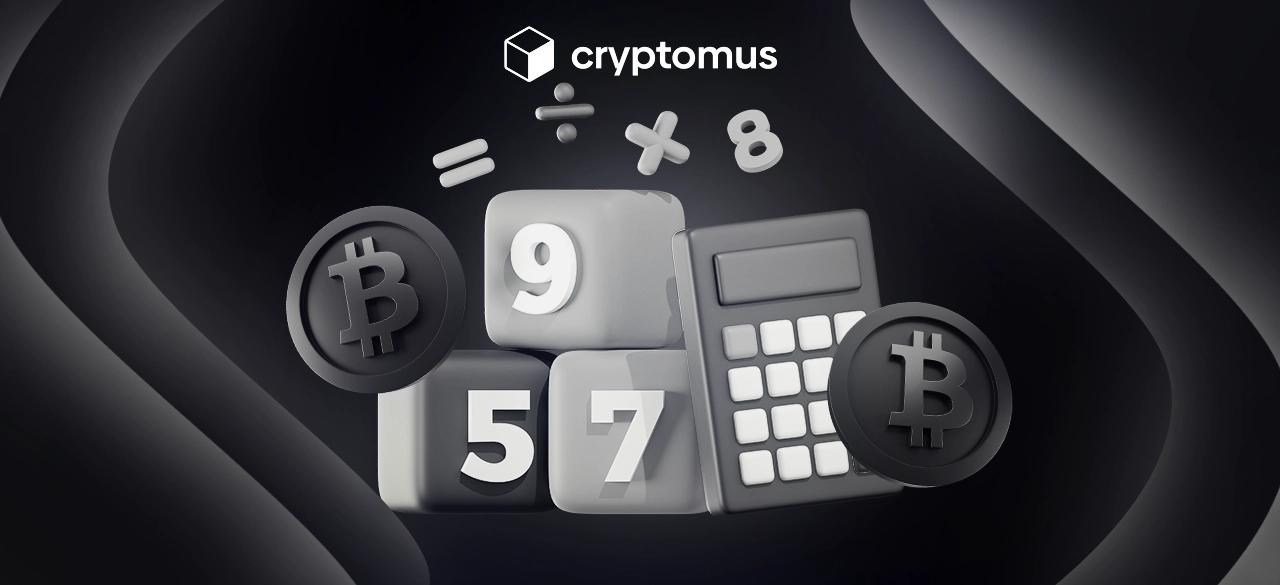
пікірлер
0
Пікір қалдыру үшін жүйеге кіруіңіз керек